*This post may contain affiliate links. This means we may make a commission if you purchase an item using one of our links*
Powering your telescope and its mount can cost you a fortune in batteries and of course the waste generated as a result of only using batteries isn’t great either.
That’s why if you’re serious about astronomy, you’ve probably already been told to look into an external power source. That’s probably also why you’ve found yourself here to do exactly that!
In the article I will go over the best power tanks that you can purchase right now so you can finally curb all the extra waste you’d be creating from constantly buying and eventuality throwing out your old used up batteries.
In A Hurry? Check Out Our 3 Best Picks Below!
Table of Contents





1. Celestron 18771-CGL PowerTank Lithium Ferrite
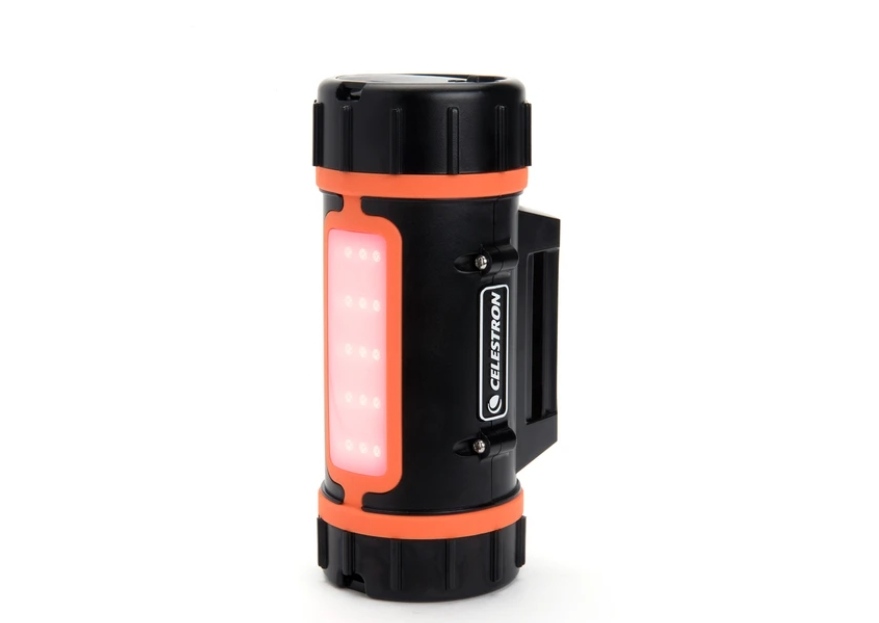
Pros :
- Lasts for 10 hours on a single charge
- The battery is rated to last for 10 years (2000+ recharge cycles)
- It’s portable and lightweight
- A full charge is relatively fast at 3 hours
Cons :
- It can only charge one device at a time when 12v is in use
- Is a little expensive at $100+
This Celestron PowerTank is a 86.4 Wh (watt hour) lithium Phosphate battery that is specifically designed to power your computerised GoTo (or PushTo telescopes) for upto 10 hours of use.
This means that unlike an acid lead or even a lithium ion battery used in smartphones, the battery has a longevity of around 10 years of uncharged shelf life, which in laymen terms means it’ll last you long a** time.
By purchasing this rechargeable battery you won’t need to worry about dealing with the constant need to swap out batteries which I’m sure you can agree can become a bit of pain overtime.
On top of that it comes with a tripod strap to attach it to your device and is very portable coming in at 22.86 x 20.32 x 10.16 cm whilst weighing in at very lightweight 1.36kg
With that being said it does have a few minor setbacks, with the most prevalent being that it can’t simultaneously charge another one of your devices when the GoTo Mount is plugged into the 12V power supply.
A few of the other minor issues is that tripods on specific Celestron devices may not be the most stable when the PowerTank is attached to it and some of you may not appreciate the 3 hour time needed to fully charge even if it is among the best in the industry.
Nevertheless, as a whole if you can overcome these issue sand simply want a PowerTank that will last you a long time, the Celestron PowerTank Lithium Ferrite is an excellent portable PowerTank to go for.
==>Click Here To Check Out The Celestron 18771-CGL PowerTank’s Price On Amazon<==
2. Celestron 18774-CGL PowerTank 7, 12V -7Ah
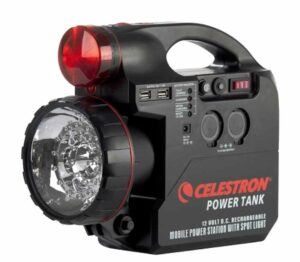
Pros :
- Has a very large flashlight
- Can be used to charge a flat car battery if need be
- 10 hour battery life
Cons :
- It is quite bulky
- No rubber around the washers
- It’s always on meaning it could electric shock you
- Takes 16 hours to fully charge when the battery is flat
The Celestron 18774-CGL is a 84 WH 12 volt battery pack with 2 USB ports and a pretty large flashlight attached to it. This flashlight will prove to be quite valuable for when you decide to set up your telescope gear for a night time astronomy session or for packing up the gear after you’re done.
There’s a red filter built in which will also allow you to view any documents without harsh light beaming down on them.
The 18774-CGL does take around 16 hours to fully charge from flat however, a single charge will last you roughly 10 hours, which is of course more than enough for most astronomers and will last for 4 solid 2+ hour sessions.
The main negatives with the 18774-CGL have to with the PowerTank’s bulky nature with it coming in at 30.5cm x 24cm x 14xm and weighing in at 3.4kg (8.5lbs) and the fact that it is always on without a rubber cap around the washers, which can certainly prove dangerous if you’re not careful.
Of course if you simply use insulation tape to minimise this concern all should be well but, it’s worth noting this just in case you stick your hand in the wrong and receive nasty shock by not knowing this.
As a whole the 18774-CGL will prove to be more than competent as your telescopes PowerTank.
==>Click Here To Check Out The Celestron 18774-CGL PowerTank’s Price On Amazon<==
3. Celestron 18777 PowerTank 17 Rechargeable Power Supply
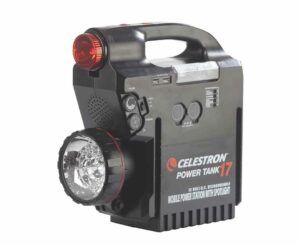
Pros :
- Very large battery capacity
- Built in AM/FM radio and siren
- Built in flashlight
Cons :
- Mediocre build quality
- Long charge up times from flat battery
- Quite bulky
The Celestron 18777 PowerTank 17 is both the beefiest and of course largest capacity PowerTank on this list as it comes with a 204WH battery inside.
The battery when fully charged will allow you to power your telescope for a very long time, we’re talking upwards of 20 hours (longevity will vary depending on what’s plugged in).
Of course due to the enormous capacity of the 18777, when the battery is flat it will take a very long time fully charge up (around 20 hours) but, that shouldn’t be too much of an issue if you keep track of how much battery is available before setting out on an astronomy session.
A few of its unique features includes its built in red and white LED flashlight to see in the dark, a built in AM/FM radio and a siren just in case you’re lost or better yet….want to prank your friends (lol) .
It also has 2 usb ports which can be used simultaneously to charge your phone and the GoTo Mount you’re using.
It’s only major downsides are its somewhat mediocre build quality and its bulk. The 18777 weighs in at 7.88kg and has dimensions at 35.6 x 33 x 14 cm making far from the most portable PowerTank on this list.
Nevertheless, if you’re simply after a beast of a PowerTank for your astronomy sessions, the Celestron 18777 PowerTank 17 is most definitely worth buying.
==>Click Here To Check Out The Celestron 18777 PowerTank 17’s Price On Amazon<==
4. Celestron 18768 PowerTank Lithium Ferrite Pro
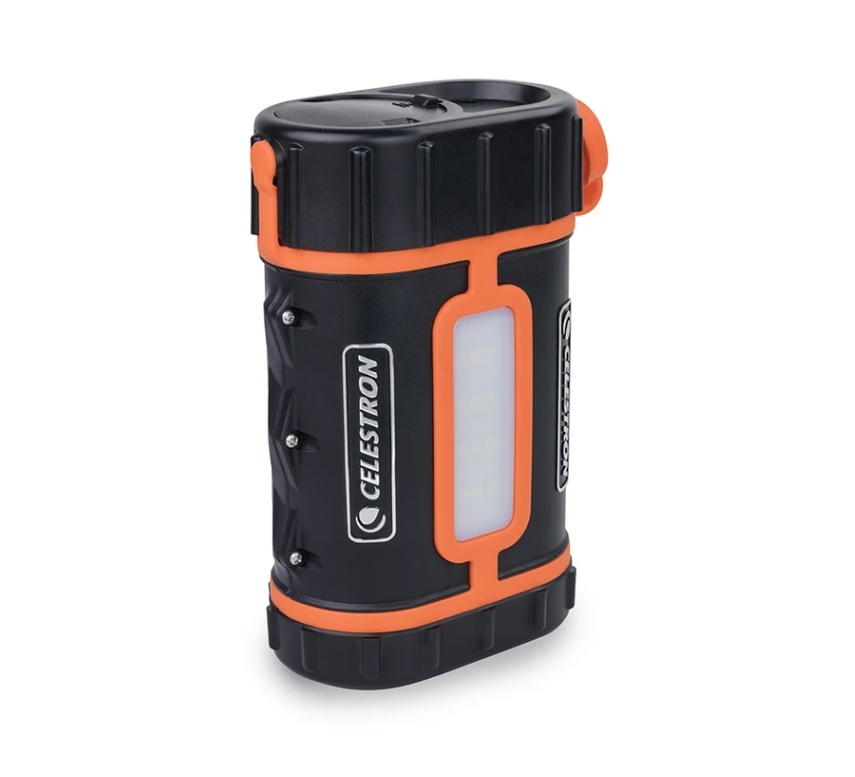
Pros :
- Very long battery life
- Will last for 10 years of usage
- Is portable and lightweight
- Fast 5 hour charging cycle from flat
Cons :
- Button layout isn’t the best
- Very long charge cycles
- Quite expensive
The Celestron 18786 is basically a more beefy 18771-CGL as it has the same design as it but, it carries a fairly sizable 158.75 WH of power inside it. This means it should last you for just under 20 hours of use when fully charged.
What this translates to is probably around 15 good sessions on the field without having to worry about your GoTo telescope or any telescope for that matter dying out prematurely. Of course the only downside here is that once the 18768 does die it will take upwards of 5 hours to recharge fully.
One of the 18768’s major positives is to do with the longevity of the rechargeable battery inside the frame. It is a unique Lithium-Iron Phosphate battery which means that the overall weight will be lighter than other similarly sized rechargeable power tanks and this technology also makes it good to go through 2000 charge cycles over its 10 year life cycle.
It also has lights built-in which will certainly help out when you’re trying to find the right cables at sunset or at night and it has 2 ports which means you’ll be able to power both your telescope and your phone at the same time if need be.
Lastly, in regards to its bulk, the 18768 is very much a portable device with it dimensions and weight coming in at 15.24 x 10.16 x 21.59 cm by 2.04kg.
Overall this portable power tank by Celestron will more than satisfy you for any astronomy session you may commit to if it’s picked up and if you’re willing to pay for bit more for its longevity.
==>Click Here To Check Out The Celestron 18768 PowerTank’s Price On Amazon<==
5. Sky-Watcher 17Ah Rechargeable Power Tank

Pros :
- Large battery capacity
- Multiple ports that can be used to charge other devices
- Built-in AM/FM radio and siren
- Built-in flashlight
Cons :
- Will take a long time to charge
- It’s quite bulky
- requires more effort to maintain
The SkyWatcher 17Ah is another awesome power supply that will provide you with upwards of 20 hours of usage provided your usage patterns aren’t specifically heavy.
It comes with a built in flashlight, an AM/FM radio, a built in siren, access to 2 usb output ports at 5V and 1.5v and 2 x 12v DC ports.
The device is of course quite bulky and the type of battery inside it isn’t the most long lasting and easy to maintain however, if you’re simply after a power supply for your telescope that will do the job really well for multiple astronomy sessions, the SkyWatcher 17 is a very solid external battery to go for.
In short, this power supply is very much the same as Celestron 17Ah variant so, if you’re looking to pick up either one of these, you should definitely go for the one that costs less.
==>Click Here To Check Out The SkyWatcher 17 PowerTank’s Price On Amazon<==
How To Choose A Power Tank For Your Telescope
There are a variety of reasons why you may choose a specific telescope power tank, which more often than not will depend on your usage pattern.
If you’re someone who plugs a ton of the things to your telescope, such as a dew heater, a cooling fan along with powering your mount, you’d ideally want to figure out your Amp usage per hour along with how long you want to use it for and then double that to find your ideal power tank.
So say all of your equipment uses up roughly 2 amp of power per hour and your typical session is around 2 hours, a power tank with 4 Amp hours of power would be sufficient.
Another factor to take into account is the type of battery you’ll be using.
Sealed Lead Acid Batteries
These types of batteries have the lowest recharge cycles available and will typically only last for around 200 – 300 charge cycles. They also need to be regularly charged otherwise they will lose their efficiency over time.
So if you were to purchase a device with this battery type it would be for the best to fully discharge and then recharge it every month to keep it at its optimum efficiency.
Lithium Ion Batteries
These type of batteries come in one of 3 different variations.
Lithium Cobalt Oxide Batteries (LCO)
LCO batteries are commonly used within laptops, phones and most other electronics you may carry. They can be charged between 500 – 1000 times before they start losing performance exponentially.
However, these batteries can suffer from overheating and bursting into flames (Samsung Galaxy note 7 for example) and they’re unable to provide 12 volts of power which ultimately will make them unusable for the typical telescope.
Lithium-Nickel Manganese Cobalt Dioxide (NMC)
These batteries are generally found within power tools or electric bikes and these they are able to provide 12 volts of power allowing you to comfortably power your telescope.
Moreover, NMC batteries tend to have a much better charging cycle period as they can last between 1000 – 2000 cycles whilst it’s ability to handle heat is far superior to the LCO batteries. All in all NMC batteries are far better in terms of reliability and longevity over the other 2 variants and is a solid battery type for telescopes.
Lithium-Iron Phosphate (LFP)
LFP batteries are once again a better lithium battery variation than the ones mentioned previously however, this does also means they’re by far the most expensive external battery sources around (for now at least).
These tend to commonly be used within power tools or medical equipment and can be charged between 2000 – 3000 times before losing performance. On top of that LFP batteries do also allow for a 12 volt output.
The thermal performance is once against improved as is the longevity and overall reliability so these batteries are definitely a good purchase if you want the highest quality battery in your PowerTank.
How To Take Care Of Your Power Tank For Extended Use
Depending on the type of battery you have, the manner in which you will need to take care of them will differ slightly. As mentioned above a lead acid battery must be drained and recharged atleast once a month to keep it at its optimum performance.
Lead acid batteries should typically get charged between 10 – 30% of the batteries life once fully charged and they should be stored at room temperature or lower (around the 10 – 15 degrees Celsius mark)
Lithium batteries don’t suffer from the same effects as lead batteries therefore they won’t need to be drained out on a regular basis. The storage in this case is till the same however, in terms of of their ability to charge there are a few differences. First of all Lithium power tanks should typically be charged around the 30%+ mark.
Furthermore these batteries tend to allow for much faster charging so, when close to the max capacity of your power tank, it will only take around 15 – 30 minutes to fully charge whilst lead batteries will take up significantly more time.
Conclusion
If you’re into astronomy or simply want a good backup power supply for a camping session in the future, any of the power tanks mentioned above should help you out a lot. Either way if you’re serious about astronomy a power supply will be quite essential!
Hopefully this article has helped you to find a PowerTank that suits whatever needs you have and will result in far better star gazing nights in the future.
A Recap Of Our 3 Favourites!






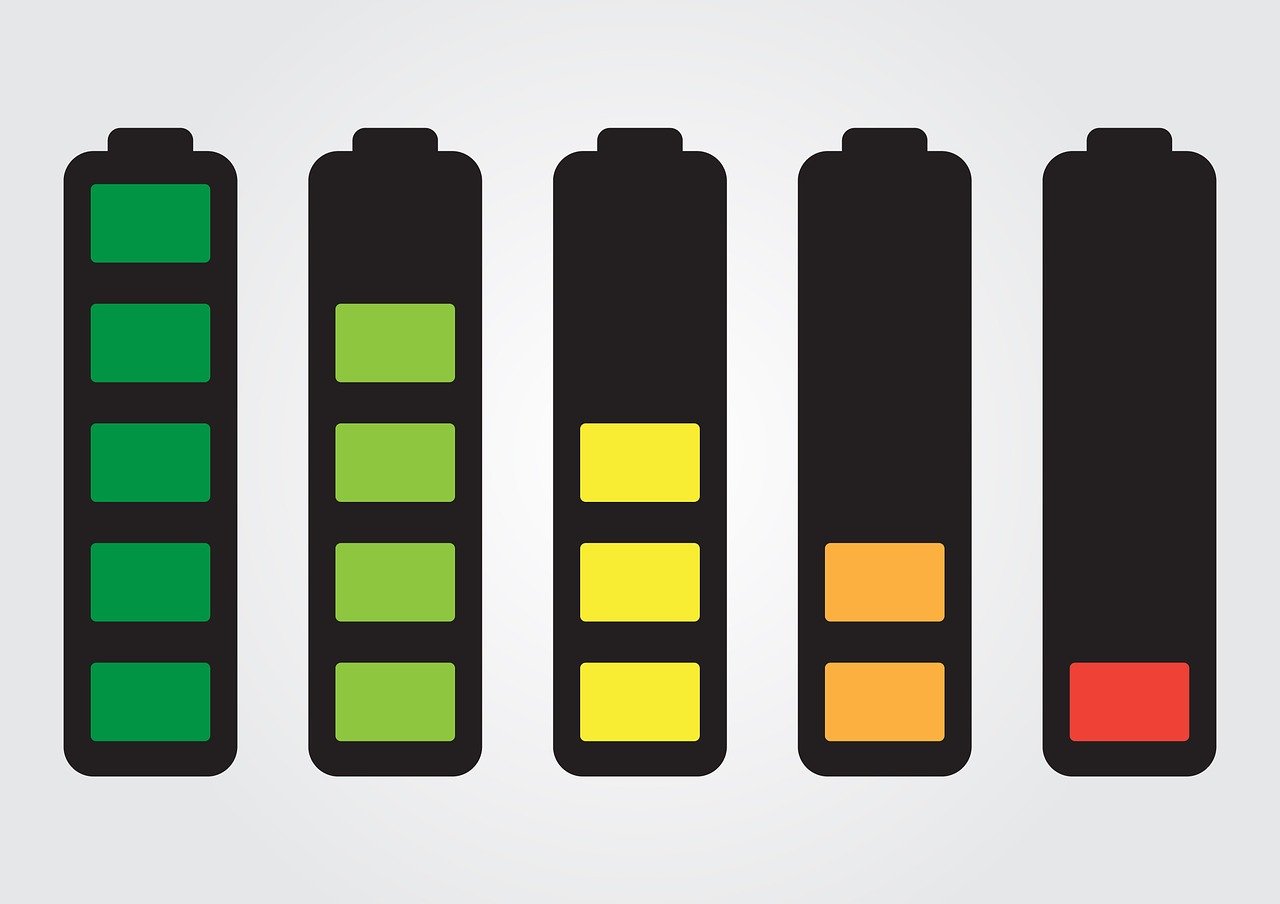
I thought lead acid batteries would only recharge to 20% of their capacity if they were ever allowed to discharge fully!?